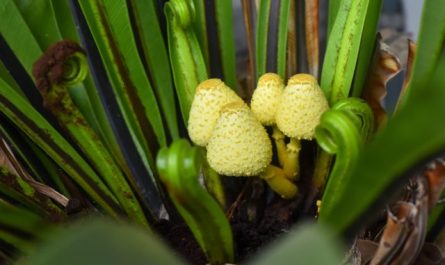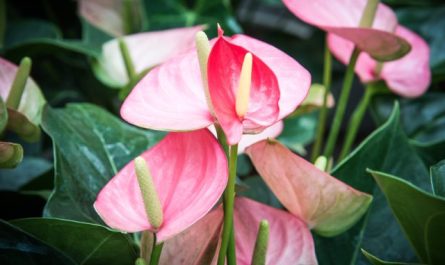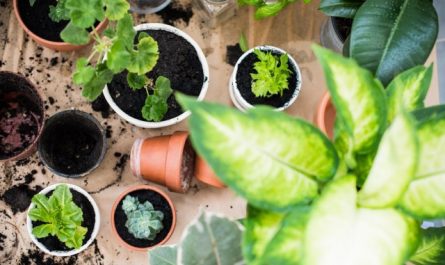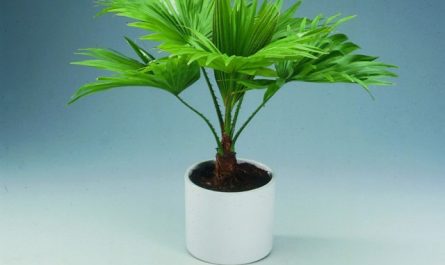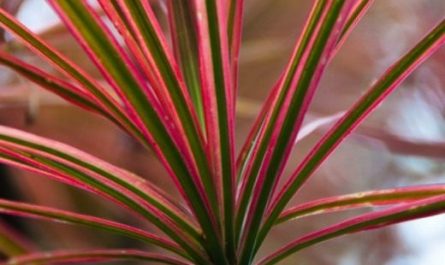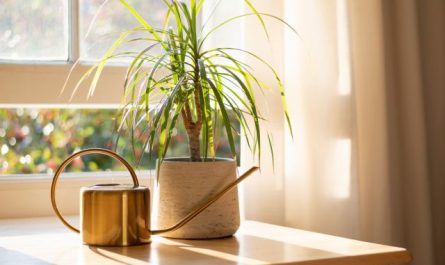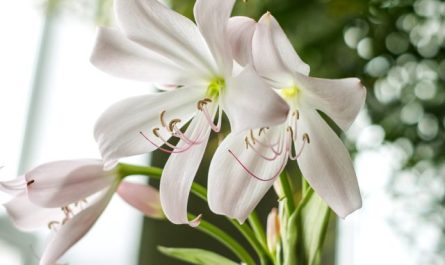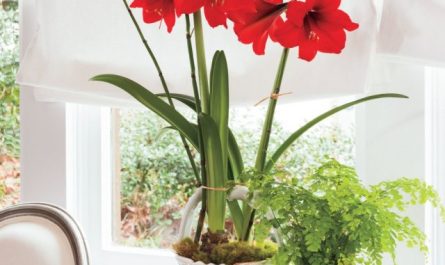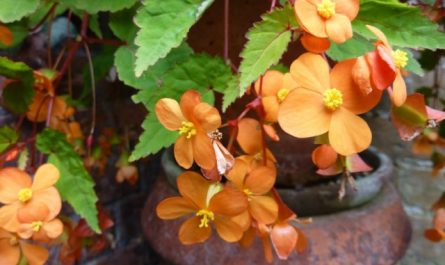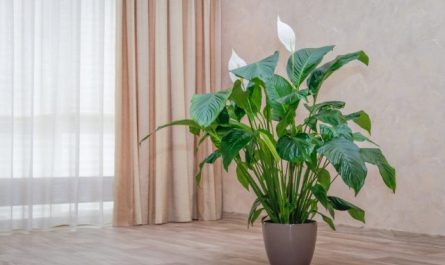It is often said about ferns that they, like palms, are practically no different from each other. But if you take a closer look at these lovers of a humid environment with luxurious fronds, you can discover an amazing diversity in appearance, size and character. One of the most special ferns – lygodium – has become famous as a large decorative leaf soloist. This plant is not just beautiful greenery, but has an unusually original structure. Lygodiums combine the carved beauty of ferns with climbing shoots and open up new horizons in room landscaping.

Contents:
The most flexible of the ferns is Lygodium
All lygodiums are climbing ferns that can be fairly classified as lianas, no matter how strange such a combination may seem. In nature, lygodiums are found in Southeast Asia.
Lygodiums are representatives of the eponymous family Lygodiaceae. In nature, you can find almost two dozen representatives of the genus Lygodium, but in floriculture, only one species has won recognition. The absolute leader among lygodiums in indoor floriculture is the Japanese lygodium – a bright, flexible and amazing fern in all respects.
Lygodium japonica (Lygodium japonicum) is a large, unusually flexible in growth forms and cultivation possibilities climbing fern. The length of the fronds of the lygodium is not limited, they can stop growing at 50 cm, but most often they stretch much higher. Lygodium can be grown in an ampelous or potted form, formed according to a support – in fact, like any other indoor liana of a not very compact size. Ampelous lygodiums resemble green waterfalls or cascades of green lace. Creeping roots are quite powerful. Lygodiums form two types of fronds – sterile, pinnately dissected, more modest and short, and at least half a meter spore-bearing fronds with a deep dissection into lobes. The thinnest sorus, numerous divisions into segments, themselves resembling miniature fronds due to the jagged edge of the lobes, make the leaves of lygodiums irresistibly ornamental. It is almost impossible to see the structure of individual leaves. The whole plant seems like a continuous lace, consisting of the most complex details.
Lygodiums are very variable in color. Depending on specific conditions and lighting, they can either retain a light or bright green color, or be a darker fern. But the shade of green in lygodiums is always striking, from the forest palette.

Conditions for indoor lygodiums
Lygodiums are universal ferns in every sense. From a stylistic point of view, they can be used in the design of almost any room, regardless of its functionality. They are good for both offices and living rooms, and will fit into the collection of any greenhouse or winter garden. But with such versatility, one very important factor should be taken into account: lygodiums need medium or high air humidity. But then, the coolness they love is more often found not at home, but in office conditions. This is not an indoor Spartan, but an exotic plant for which you will have to carefully select the conditions. And it is worth using it in offices or ordinary rooms only when the requirements of lygodiums can be fully met.
Unique climbing ferns can only be recommended to experienced gardeners. It’s not just that lygodiums need specific conditions. Unpleasant surprises often arise in the development of plants, you need to notice signals about their ill health and adjust the conditions in time. And for appropriate care, you will need at least a little experience in caring for indoor exotics.
Lighting and placement of lygodium
Despite belonging to ferns, lygodium is inferior to its brethren in shade tolerance. It prefers not sunny places, but the brightest possible lighting. Insufficient lighting leads to disruption of growth, stretching and loss of texture of foliage, but in rooms with large windows you can experiment with placing lygodium in partial shade. During the dormant period, if the recommended temperature regime is observed, lygodium does not need additional lighting, but moving it to a brighter place will not harm it.
This fern feels good on eastern, western and northern windowsills or in the interior, provided the same intensity of lighting. When choosing a place for lygodium, consider what size the plant will reach with the chosen form of cultivation. If the fern is grown in an ampelous basket, then it will need a lot of space. But in principle, even lygodiums formed on supports look better in proud solitude. Plants are placed at some distance from other plants: after all, their greenery is so special that it is better to emphasize it with a solo part.
Temperature conditions and ventilation required for lygodium
The most comfortable environment for lygodium is a cool environment. This fern likes temperatures around 16-18 degrees and does not respond well to heat, even if the air humidity is controlled or increased. During the period of active growth, warmer room temperatures are also suitable for lygodium, provided the air humidity is high – from 20 degrees to higher values, but it is better to limit the maximum temperature to 25 degrees. In winter, it is better to lower the temperature to 16 degrees Celsius, avoiding severe hypothermia.
One of the main advantages of lygodium is its resistance to drafts. This plant is not afraid of air currents during ventilation, unless there is a sharp temperature change. The plant needs to be protected from cold drafts, as well as from hypothermia.

Caring for lygodium at home
Lygodium is considered a difficult plant to care for, and rightly so. This fern does not forgive mistakes, is prone to losing its decorative qualities, and requires regular watering. You will have to monitor air humidity levels and carefully approach fertilizing, but humidity is the key factor in growing this plant.
The most important point of caring for lygodium is regular monitoring. The leaves of the plant should be examined every week, paying attention to any changes – from color to the appearance of signs of problems with growth and development. Only regular inspections will help to identify problems at the earliest stages and solve them without much effort.
The period of rest in indoor conditions for lygodiums, although relative, is clearly visible. As a result of reduced lighting from November to March, the plant stops growing and developing.
Watering of lygodium and air humidity
Accuracy and restraint are the key to success in watering lygodium. The plant needs to maintain constant light soil moisture, not allowing either dampness or complete drying of the soil even in the middle layer. Before each procedure, the top layer of soil should be allowed to dry out. During the dormant period, the substrate is dried twice as much and, accordingly, the time between waterings is doubled. But even in winter, the substrate should not be allowed to dry out.
For lygodiums, use water at the same temperature as the air in the room and it must be settled and soft in characteristics.
For lygodiums, it is necessary to maintain high or medium-high air humidity. The minimum value of indicators is 60%. The fern develops best when humidifiers are installed – both industrial devices and home-made analogs in the form of bowls or trays. Spraying alone will not be enough for this fern, but if the room has constant average humidity indicators, then the installation of a humidifier can be replaced by daily spraying. When placing lygodium, you should avoid proximity to heating and air conditioning devices.
Top dressing and fertilizer composition for lygodium
Lygodiums do not require frequent fertilizing. Fertilizers can be applied to them at a universal frequency of once every 1-2 weeks, but it is better to reduce the fertilizer dosage by half compared to the manufacturer’s recommendations. Fertilizers are not applied during the dormant period.
For lygodiums, you can use not only special fertilizers for ferns, but also regular universal fertilizers for indoor plants.
Pruning and shaping of lygodium
Ferns do not need pruning as such. All procedures come down to removing dry or damaged parts, which is carried out as needed or after wintering.
It is not necessary to grow lygodiums only as an ampelous plant, this fern grows well on a support, you can form a lygodium along any contour or base. From simple ladders to figured supports for garden vines. A very popular option is to install separate “spokes” for each frond, which give the plant almost fantasy silhouettes and turn lygodiums into living antennas. In this form, they often appear on sale, but when choosing a possible solution, it is worth remembering that the best way to appreciate the beauty of this type of fern is when the plant is given maximum freedom. The shoots are tied with soft natural twine or bundles.
Transplantation of lygodium and substrate
For lygodiums, standard containers are selected. The ratio of the height and diameter of the pot should be either equal, or the height should be slightly larger. When choosing ampelous containers, it is worth stopping at standard, medium-sized, hanging baskets.
This fern will rarely need to be replanted. It is carried out only when the plant has completely occupied the entire space of the pot and the roots appear from the drainage holes. Usually, lygodiums are replanted once every 1-2 years, depending on the age of the plant and growth rate.
For lygodiums, you can choose a standard soil mixture for ferns. Both a purchased substrate and your own slightly acidic mixture with sufficient nutritional value and high air permeability will do. The optimal soil reaction is from 5,0 to 6,0 pH. If you mix the soil yourself, it is best to combine 2 parts of turf soil with 1 part of leaf soil and 1 part of sand. It is advisable to mix dry sphagnum or loosening additives into the soil.
When replanting, a high drainage layer must be placed on the bottom of the container. The more the soil lump is preserved during the procedure, the better.

Diseases, pests and problems when growing
Lygodiums suffer more from indoor plant pests than from diseases. Scale insects and spider mites love the leaves of this fern, and it is very difficult to deal with them without insecticide treatment. Therefore, constant inspection, which ensures that problems are noticed at an early stage, is the most important point in caring for lygodiums.
Common problems in growing lygodium:
- the tips of the leaves dry out due to insufficient watering, fluctuations in soil moisture, or in very dry air;
- wilting of leaves when the substrate dries out completely;
- stretching, sparse arrangement of leaves, when watering is incorrect and air humidity is low;
- paleness or darkening due to insufficient lighting and lack of fresh air.
Reproduction of lygodium
A new generation of lygodium can be obtained from spores by sowing them in moist, slightly acidic soil mixed with sphagnum and maintaining a warm environment with high air humidity in a greenhouse with bottom heating. In such conditions, the spores germinate amicably, but growing the plants is very difficult, they are so miniature, fragile and delicate.
A much simpler option is to divide adult lygodiums. Bushes can be divided at each transplant into two, or at most three parts, both reducing the volume of the original plant and getting several accents for greening the rooms.

